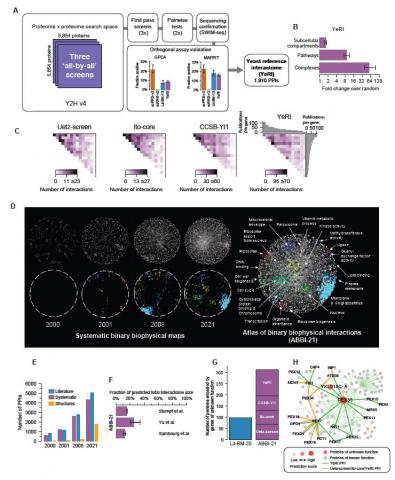Binary Interactome Models of Inner-Versus Outer-Complexome Organization

Lambourne L, Yadav A, Wang Y, Desbuleux A, Kim DK, Cafarelli T, Pons C, Kovács IA, Jailkhani N, Schlabach S, De Ridder D, Luck K, Bian W, Shen Y, Mee M, Jacob Y, Lemmens I, Rolland T, Tavernier J, Spirohn K, Zhong Q, Aloy P, Hao T, Charloteaux B, Roth FP, Hill DE, Calderwood MA, Twizere JC, Vidal M, The interactome is often conceived of as a collection of hundreds of multimeric machines, collectively the “complexome”. However, the large proportion of the proteome that exists outside of the complexome, (the “outer-complexome”) is expected to account for most of the functional plasticity exhibited by cellular systems. To compare features of inner- versus outer-complexome organization, we generated an all-by-all yeast systematic binary interactome map, integrated it with previous binary maps, and compared the resulting binary interactome “atlas” with systematic co-complex association and functional similarity network maps. Direct binary protein-protein interactions in the inner-complexome tend to be readily detected in different assays and exhibit high levels of coherence with functional similarity relationships. In contrast, pairs of proteins connected by relatively transient, harder to detect binary interactions in the outer-complexome appear to exhibit higher levels of functional heterogeneity. Thus a small proportion of the interactome corresponds to a stable, functionally homogeneous inner-complexome, while a much greater proportion consists of mostly transient interactions between pairs of functionally heterogeneous proteins in the outer-complexome.
bioRxiv,
2021
Direct link: 10.1101/2021.03.16.435663
